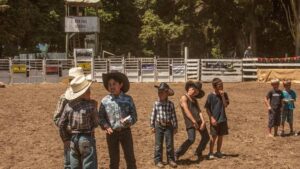10 Jul Sarjeant Happenings: Photo exhibit – Observations of a Rural Nurse

The Sarjeant is the first public gallery to exhibit the photographs.
As a nurse Sara McIntyre made clinical observations of all her patients, whether that was in the neonatal intensive care or as a rural nurse in the King Country.
Her photographic observations are, in a different way, no less a matter of life and death, registering with a keen eye the seasonal beauty of landscape, the characters and their community, the history and the daily realities of this part of New Zealand.
Her photographic exhibition, Observations of a Rural Nurse, at the Sarjeant Gallery June 27 to October 18 is companion to the book of the same name, which may be purchased at the gallery shop.
The book brings together her “observations” of Kākahi and the surrounding King Country towns of Manunui, Ōhura, Ōngarue, Piriaka, Ōwhango and Taumarunui. The Sarjeant is the first public gallery to exhibit the photographs.
McIntryre says she is thrilled to exhibit at the Sarjeant as Whanganui is almost home ground.
“I am really just up river. I live on the Whakapapa River [in Kākahi] but I can see where the two rivers join and in my childhood we always drove through this way. It’s a gallery I have always been interested in because it is really good on New Zealand photography, so it’s really nice to be part of it.”
McIntyre moved to Kākahi 10 years ago.
Her parents, renowned New Zealand painter Peter McIntyre and wife Patricia (Patti), spent many holidays there with their children, Sara and her brother Simon.
Sara was 9 when they began a long relationship with the area and she recalls the local children riding horses bareback around the streets, as they do still.
“It used to be a busy place, even Kākahi used to have hotel, saw mill, railway station, shops. Then everything closed down. But what is nice is the total unpretentiousness of it and that’s why it looks like a time warp. It’s just the way people choose to live.
“Consumerism hasn’t really hit, and it just doesn’t matter. It’s a very real place to live. And it’s humbling. You start to re-evaluate your own life when you live there. I think my parents also liked that quieter, slower pace where they lived six months of the year. They led a fairly high life but they liked to balance it and they had very genuine friends in the area.”
Through her work McIntyre says she has been privileged to enter people’s lives, forging different kinds of relationships with her patients from those possible in a hospital environment. Patients have names and a whole context, rather than being a bed number and a health condition.
“The people I have chosen to photograph have all got a real story, and they are characters. It’s when you go to the kitchen sink to get some water in someone’s house and you notice the tapestry on the wall and ask to photograph it. And they say why? I liked the quirkiness of the tapestry and the cats on the Coca-Cola stand next to it.”
On people’s walls she says there is a sense of history and she has heard many stories, willingly told once she has asked. The walls of the exhibition attest to this.
“The whānau is all important, alive and dead. You get this incredible feeling of community and that carries on through daily life. We don’t socialise much but when you have events at the marae there is a very strong sense of community.”
She has known Manu the local shopkeeper since she was 9 years old and Manu was 19. He agreed to be photographed and proudly arranged books by Sara’s father, Peter, behind the counter.
“There’s been a long history – someone that you see all the time. And you go into the store and it’s quiet and you know he doesn’t want to talk, but sometimes you have long conversations about all sorts of things.”
These sparsely populated areas of the King Country are now attracting urban refugees. Sara says people such as artists are starting to move there from Auckland, seeking a quieter, simpler way of life.
Sara McIntyre will be in conversation with Sarjeant Curator and Public Programmes Manager Greg Donson at Sarjeant on the Quay on Saturday, July 11 J at 11am. Sara’s book Observations of a Rural Nurse are available for sale at the Sarjeant shop.
This article is written by Helen Frances.
It first appeared on NZ Herald online and the Whanganui Chronicle on July 7, 2020. See here.

